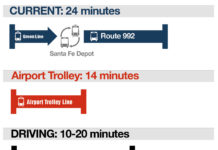When Homelessness Hits Home
A letter arrives from the Los Angeles Coroner’s office. My chest tightens, the mind focuses. Letter open, the words jump out, “Gary . . . death,” eyes turn away, childhood memories surface.
The Letter
The notifications section of the Los Angeles County Department of Coroner has been assigned the responsibility of attempting to locate family for the above-named person. During our efforts to locate next of kin, your name and/or address has been uncovered in connection with the decedent’s history.
If the above named is a relative, I first of all extend to you my condolences on your loss and sincerely apologize for the insensitivity of informing you of the death in this manner. Regrettably, other methods of notification have not been successful.
If you are related to the above-named person . . .”
By phone, the Coroner’s office informs us our cousin was homeless, living on the UCLA campus. Palm on forehead, my thoughts turn to memories of Christmas Eves long ago, childhood faces glowing with excitement, colorfully wrapped gifts, sparkling lights on the tree.
How did this happen?
From the Daily Bruin Newspaper
“63-year-old dies after falling from UCLA Biomedical Library”
A 63-year-old man died after falling from the UCLA Biomedical Library on Oct. 28. The Los Angeles County coroner identified the death as a suicide.
UCPD spokesperson Nancy Greenstein said UCPD responded to reports of a person falling from the roof or window at 11:30 a.m. She added the person does not appear to be affiliated with UCLA.
Greenstein said UCPD is not releasing the name and is not investigating the death as a homicide.
The library was closed and blocked off from bystanders after the incident. The library opened again at about 2:20 p.m., according to police at the scene.
Counselors were stationed in the library to help those affected by the death, Greenstein said.
Drive down any busy street in San Diego, or Los Angeles, and you’ll see at intersections, on the center meridians, the homeless, looking worn, disheveled, with signs asking for money. Some are mentally ill, others support a drug or alcohol habit, still others perhaps adding to their public assistance income. Whatever the motivation, the sleeping bags lining downtown streets, the shopping carts used as mobile homes, and the panhandlers in front of shops and on street corners are disturbing. And the problem is growing.
According to Forbes Magazine, San Diego and County has the fourth largest homeless population in the country at 8669. However, New York leads with an astounding 73,523, followed by Los Angeles and County at 48,853 and Seattle at 10,730.
My cousin, estranged from family, hadn’t spoken with me in 20 years. But now, I wanted to know why. I put an ad in the Daily Bruin: “Did anyone know the homeless person who fell from the Biomedical Library on Oct 28? He was my cousin. Please contact me by email …”
No response.
Gary’s death hit home. No longer were these nameless individuals staring at me as I wait for the signal to turn green on Clairemont Mesa Blvd. They’re someone’s cousin, son, daughter, father, who, for whatever reason, chose not to use the safety nets available to them. Instead, they hit the streets, sliding down a path of self-destruction.
In an attempt to make sense of it all, I watch the documentary Without a Home, by Rachel Fleischer. The background music written by her sister Jessica is poignant, and the lyrics linger for days. “Walking the streets, but nowhere left to go, pushing carts, there’s nothing left to show, the hunger never dies, the sorrow in their eyes …” The movie follows Rachel as she documents the lives of six homeless people living in the Los Angeles area. Rachel is pulled into their lives and finds herself attempting to help. At the end of the documentary, the viewer is left with the feeling that there is no easy answer. Those who live on the streets surrender their sovereignty, often having mental and emotional problems that exceed the limits of any “Twelve Step” type of program.
The National Law Center on Homelessness and Poverty indicates, as of 2016, approximately 1,750,000 are homeless in the U.S. Sixty-six percent have alcohol, drug abuse or mental illness issues.
According to an article in the Los Angeles Times, “San Diego County is moving forward with a new program that will provide long-term housing and care to as many as 1,250 mentally ill homeless people in the next two years.” And, in 2016, the Los Angeles City Council, after declaring that homelessness had reached “emergency proportions,” approved a $100 million plan for homeless services this year. And $2 billion over the next decade for housing – including appointing a city homeless coordinator, creating a network of public restrooms and showers, and, making a huge investment in affordable housing.
Whether or not another layer of programs, another bureaucracy, will make a dent in homelessness remains to be seen.
My cousin, alone, scared, confused, his mind and spirit no longer looking forward to a better life, chose to end it. I’m sorry. I’m sorry I couldn’t have done something.
There are 1,750,000 ‘Garys’ living on the streets, alone, scared and confused.
Robert Ross is a long-time Clairemont resident and can be reached at SanDiegoRoss@Yahoo.com



